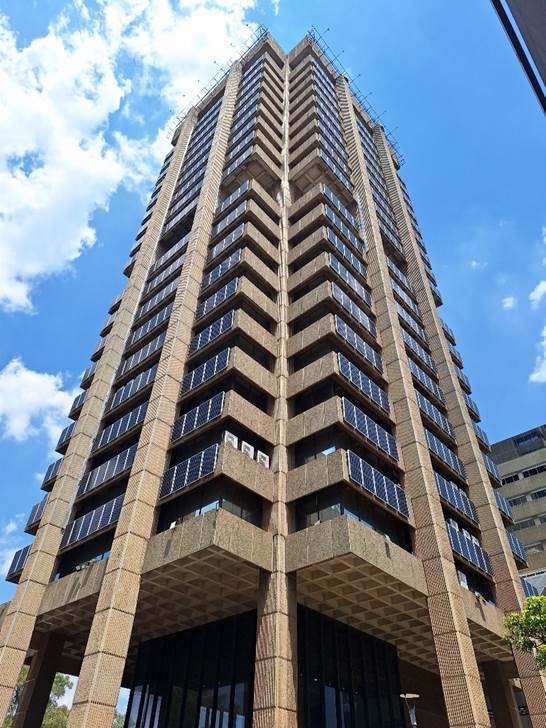Energy Partners, in collaboration with Fairvest, has completed the Metalbox skyscraper solar project in Auckland Park, Johannesburg, featuring building-integrated photovoltaics (BIPV) that generate up to 300MWh annually, making it South Africa’s first solar facade skyscraper.
“The Metalbox skyscraper project is history in the making,” says Energy Partners’ CEO, Manie de Waal. “We’ve seen similar projects succeed worldwide. But it required both a visionary client and a committed team to set a new benchmark for South Africa’s green energy transition.”

Fairvest’s chief operating officer, Riaz Kader, adds: “Metalbox is an energy-hungry property. This solar installation marks our innovative, solutions-driven approach towards renewable energy solutions and the investment is in line with our ESG and strategic objectives. We are committed to investing in sustainable energy and water infrastructure to de-risk our portfolio by providing a degree of energy and water independence while lowering the cost of electricity for our company and tenants.”
Metalbox, standing 80m tall and with just under 15 000 square metres of gross leasable area, is one of the largest commercial office properties in Fairvest’s portfolio.
The project incorporates two solar systems: Monocrystalline panels on the building’s sides provide energy efficiency and aesthetic appeal, performing well even in low-light conditions; while the roof features carport-type panels, optimising sunlight exposure while offering weatherproofing to services located on the roof.
Charl du Plessis, GM of Energy Partners, Power, says: “Both systems utilise BIPV technology which we’ve seen integrated into several iconic buildings around the world including Japan’s Solar Ark and Denmark’s Copenhagen International School.
“This technology performs the incredible task of transforming conventional building parts into solar systems, enhancing functionality, aesthetics and, ultimately, improved return on investment. For us to be able to successfully complete such a project in South Africa is a game-changer.”
The business case for solar, says Du Plessis, has three main drivers – cost, generation potential, and alternative cost of electricity.
“With the ever-increasing cost of grid electricity, a tipping-point has been reached where even capex-intensive projects with lower generation potential are feasible.”
That’s not to say that the project was without its challenges.
“The top priority for us was ensuring the safety of our installation team who worked from lowered platforms,” says Du Plessis. “Then we had to achieve adequate torque on the clamps for environmental resilience – no mean feat considering that the solar panels had to cover a total area of 1 259m² and making this South Africa’s largest custom-built commercial installation.”
Shading had to be carefully modelled to accurately predict generation forecasts, and the engineering design includes various aspects to ensure maintainability over the long-term.
Additionally, the project required close collaboration with regulatory authorities and had to undergo a “glint and glare” study to mitigate solar glare effects on neighbouring surroundings, building plan approval, and embedded generation approval.
